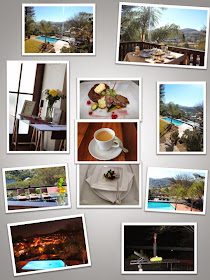Swakopmund Municipality launched its Green Environmental Project (GEP) on World Environment Day and hopes to create a more environmentally conscious and responsible community, which should also lead to more 'green' spaces in town, especially in the previously disadvantaged areas.
Swakopmund mayor Juuso Kambueshe said that the conservation of the town's environment was the responsibility of all the town's residents; not just the municipality's.
Coastal towns are especially affected by environmental challenges, particulalrly in light of concerns pertaining to climate change and rising sea levels. In fact, last week, waves higher than four metres pounded the coast, causing some infrastructural damage. Die-hard surfers who travel the world for good surfing, have even suggested that these high tides at the coast recently were some of the meanest they have witnessed in this part of the world.
"We are all affected by these issues and should therefore all take responsibility," said Kambueshe.
One of the main drives behind the GEP is Swakopmund's quest to remain the cleanest holiday resort in sub-Sahara Africa, according to Kambueshe, and also to promote it as the preferred international tourism destination.
"Swakopmund has an image to protect and a reputation to maintain," said Kambueshe, adding that compliments stream in from all over the world regarding the town's cleanliness.
The goals of the GEP are to bring together environmental groups such as schools and community environmental clubs, thus coordinating all activities under one umbrella body. The project intends to assist all clubs to be active and to link all clubs in order to share expertise, knowledge and experiences. It will further solicit all forms of support from local businesses and organisations on behalf of its members.
Partners in GEP will also be acknowledged as Eco-Mates and receive certificates to promote their commitment to local environmental affairs.
GEP activities are also aimed at adding value to the national curriculum for basic education through the integration and promotion of environmental studies in formal education and supporting youth-led initiatives.
The annual Project Shine initiative by the municipality will also form part of GEP. Project Shine 2014 was also launched.
Swakopmund mayor Juuso Kambueshe said that the conservation of the town's environment was the responsibility of all the town's residents; not just the municipality's.
Coastal towns are especially affected by environmental challenges, particulalrly in light of concerns pertaining to climate change and rising sea levels. In fact, last week, waves higher than four metres pounded the coast, causing some infrastructural damage. Die-hard surfers who travel the world for good surfing, have even suggested that these high tides at the coast recently were some of the meanest they have witnessed in this part of the world.
"We are all affected by these issues and should therefore all take responsibility," said Kambueshe.
One of the main drives behind the GEP is Swakopmund's quest to remain the cleanest holiday resort in sub-Sahara Africa, according to Kambueshe, and also to promote it as the preferred international tourism destination.
"Swakopmund has an image to protect and a reputation to maintain," said Kambueshe, adding that compliments stream in from all over the world regarding the town's cleanliness.
The goals of the GEP are to bring together environmental groups such as schools and community environmental clubs, thus coordinating all activities under one umbrella body. The project intends to assist all clubs to be active and to link all clubs in order to share expertise, knowledge and experiences. It will further solicit all forms of support from local businesses and organisations on behalf of its members.
Partners in GEP will also be acknowledged as Eco-Mates and receive certificates to promote their commitment to local environmental affairs.
GEP activities are also aimed at adding value to the national curriculum for basic education through the integration and promotion of environmental studies in formal education and supporting youth-led initiatives.
The annual Project Shine initiative by the municipality will also form part of GEP. Project Shine 2014 was also launched.
















